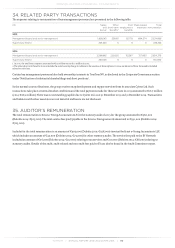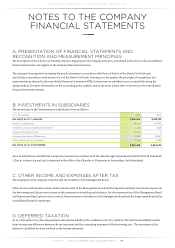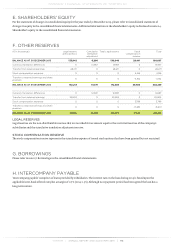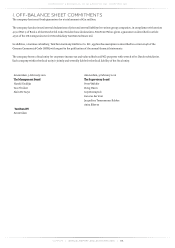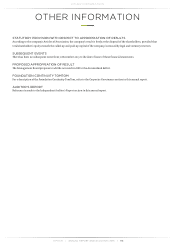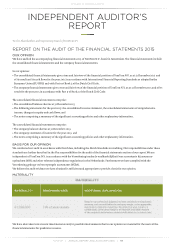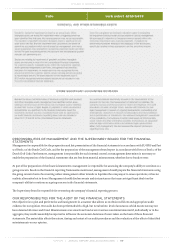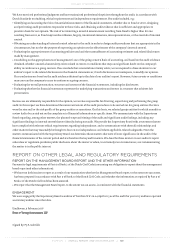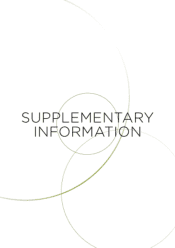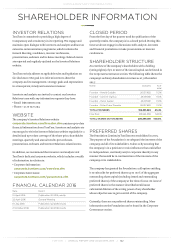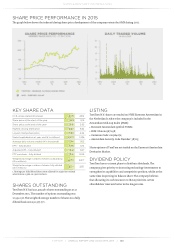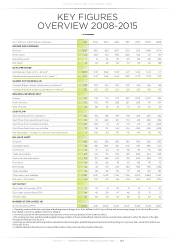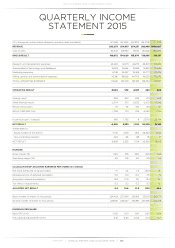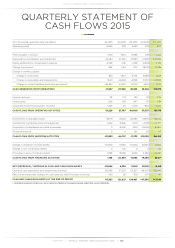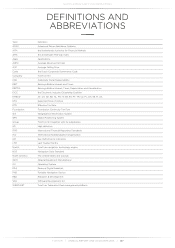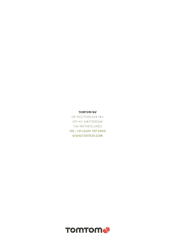TomTom 2015 Annual Report Download - page 121
Download and view the complete annual report
Please find page 121 of the 2015 TomTom annual report below. You can navigate through the pages in the report by either clicking on the pages listed below, or by using the keyword search tool below to find specific information within the annual report.
OTHER INFORMATION
TOMTOM / ANNUAL REPORT AND ACCOUNTS 2015 / 120
We have exercised professional judgment and have maintained professional skepticism throughout the audit, in accordance with
Dutch Standards on Auditing, ethical requirements and independence requirements. Our audit included, e.g.:
Identifying and assessing the risks of material misstatement of the financial statements, whether due to fraud or error, designing
●
and performing audit procedures responsive to those risks, and obtaining audit evidence that is sufficient and appropriate to
provide a basis for our opinion. The risk of not detecting a material misstatement resulting from fraud is higher than for one
resulting from error, as fraud may involve collusion, forgery, intentional omissions, misrepresentations, or the override of internal
control.
Obtaining an understanding of internal control relevant to the audit in order to design audit procedures that are appropriate in the
●
circumstances, but not for the purpose of expressing an opinion on the effectiveness of the company’s internal control.
Evaluating the appropriateness of accounting policies used and the reasonableness of accounting estimates and related disclosures
●
made by management.
Concluding on the appropriateness of management’s use of the going concern basis of accounting, and based on the audit evidence
●
obtained, whether a material uncertainty exists related to events or conditions that may cast significant doubt on the company’s
ability to continue as a going concern. If we conclude that a material uncertainty exists, we are required to draw attention in our
auditor’s report to the related disclosures in the financial statements or, if such disclosures are inadequate, to modify our opinion.
Our conclusions are based on the audit evidence obtained up to the date of our auditor’s report. However, future events or conditions
may cause an the company to cease to continue as a going concern.
Evaluating the overall presentation, structure and content of the financial statements, including the disclosures.
●
Evaluating whether the financial statements represent the underlying transactions and events in a manner that achieves fair
●
presentation.
Because we are ultimately responsible for the opinion, we are also responsible for directing, supervising and performing the group
audit. In this respect we have determined the nature and extent of the audit procedures to be carried out for group entities. Decisive
were the size and/or the risk profile of the group entities or operations. On this basis, we selected group entities for which an audit or
review had to be carried out on the complete set of financial information or specific items. We communicate with the Supervisory
Board regarding, among other matters, the planned scope and timing of the audit and significant audit findings, including any
significant findings in internal control that we identify during our audit. We provide the Supervisory Board with a statement that we
have complied with relevant ethical requirements regarding independence, and to communicate with them all relationships and
other matters that may reasonably be thought to bear on our independence, and where applicable, related safeguards. From the
matters communicated with the Supervisory Board, we determine those matters that were of most significance in the audit of the
financial statements of the current period and are therefore the key audit matters. We describe these matters in our auditor’s report
unless law or regulation precludes public disclosure about the matter or when, in extremely rare circumstances, not communicating
the matter is in the public interest.
REPORT ON OTHER LEGAL AND REGULATORY REQUIREMENTS
REPORT ON THE MANAGEMENT BOARD REPORT AND THE OTHER INFORMATION
Pursuant to legal requirements of Part 9 of Book 2 of the Dutch Civil Code (concerning our obligation to report about the management
board report and other information):
We have no deficiencies to report as a result of our examination whether the Management Board report, to the extent we can assess,
●
has been prepared in accordance with Part 9 of Book 2 of the Dutch Civil Code, and whether the information as required by Part 9 of
Book 2 of the Dutch Civil Code has been annexed.
We report that the Management Board report, to the extent we can assess, is consistent with the financial statements.
●
ENGAGEMENT
We were engaged by the Supervisory Board as auditor of TomTom N.V. on 24 April 2015 as of the audit for year 2015 and have operated
as statutory auditor since that date.
Eindhoven, 9 February 2016
Ernst & Young Accountants LLP
Signed by: P.J.A. Gabriëls


